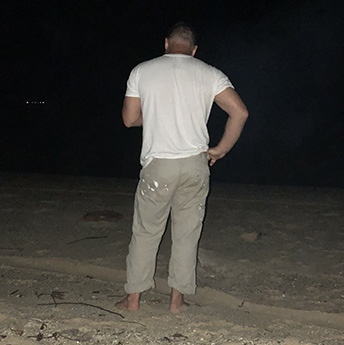
By John McMahon
Travel Writer26 Feb 2020 - 5 Minute Read
Coaxing two 1,765lb (800kg) water buffalo into the bed of a pickup truck is no easy task at four in the morning. The three members of team Kanchanaburi Red, organized by my friend and neighbor Air, struggle to get the animals moving in the dark. Air’s father, frustrated with us “kids” screwing around, goes for his tractor. Once faced with the little Kubota plow, the animals simply lumber onto the truck bed, where they continue to mindlessly chew their cud for the next six hours.
The buffalo and their handlers are on their way to the 148th annual buffalo racing festival in Chonburi province, about 50mi (80km) southeast of Bangkok in Thailand. It’s the only one of its kind in the world. The races began when, in the past, farmers would gather in provincial capitals at the end of the rainy season to offer alms to monks, sell their produce, and make deals on their future rice crops. These gatherings would last for days, while famers enjoyed some rare downtime to sing and dance and gamble. Gambling could include anything from frog jumping contests to buffalo racing.
At the time, buffalo were the all-purpose beast of burden – plowing, sowing, and mowing to keep the Thai rice bowl overflowing. The animal and keeper knew each other intimately. Today, buffalo have been replaced by machines in the fields, and often their only interaction with farmers is being herded from area to area, so these racing buffaloes need to be trained.
Air and his father keep a small herd of buffalo outside their scrap yard and repair shop, mostly for sentimental reasons – both mother and father grew up around large numbers of water buffalo and see them as a good store of wealth. Air, on the other hand, grew up surrounded by and working on machines, but still got into buffalo racing, attracted to the tradition. He explains that he and his crew start training months before the races, running the animals in small groups to get them used to the idea of racing and slowly working them towards accepting a rider on their backs.
The buffalo racing is the main event of the three-day festival, which includes farming demonstrations, greased pole climbing, and something called the elderly woman contest.
I first saw a group of boys racing buffalo on a beach over a decade ago, and have since wanted to witness the Chonburi races, but somehow managed to miss them year after year. The buffalo racing is the main event of the three-day festival, which includes beauty pageants, farming demonstrations, greased pole climbing, something called the elderly woman contest, and a marksmanship competition with catapults (sling shots) that, considering the enthusiasm of its spectators, could be played out for Olympic gold.
By 6am, the grounds are crowded with animals, handlers, and onlookers to watch the opening ceremonies. Along the streets, ornately decorated buffalo carts wheel slowly by, with elegant women in traditional Thai dress on board. The floats are followed by children in costume, and musicians filling the already hot morning with raucous rhythms. Rides, games, and stalls selling souvenirs are ready for the crowds, and as no Thai festival is complete without plenty to eat, food stalls are steaming and frying all around.
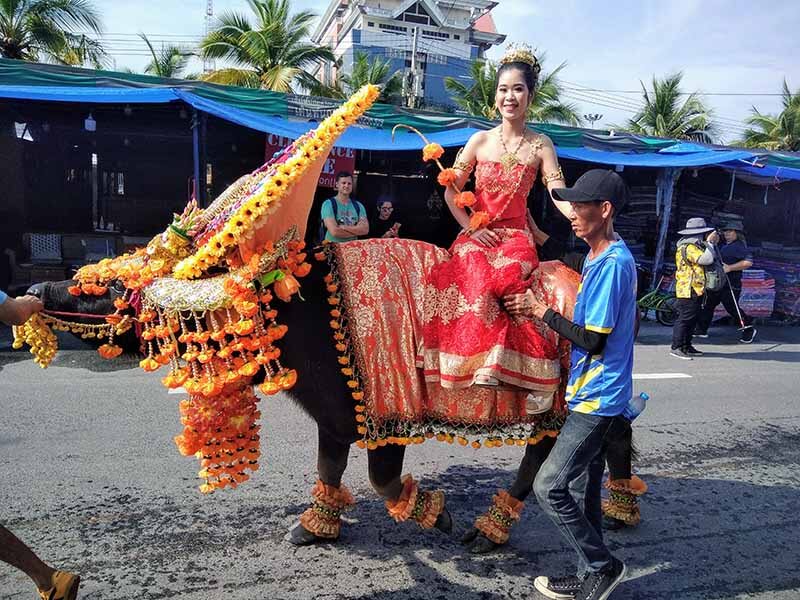
The buffalo is generally considered a dim-witted, passive beast. To call someone a buffalo, kwai, is about as insulting as it gets in Thailand. In the race pit, though, the buffalo, constantly drenched with buckets of water to keep them cool, are stomping their feet and swinging their massive horns back and forth, while handlers cajole them into the starting chutes long enough for riders to mount and the crack of the pistol to sound.
The heats are arranged by the animals’ size, from super junior to jumbo, as some of the beasts weigh in at over a metric ton. Perched on the buffalo’s haunches, the jockeys are poised with their rattan whips held at the ready. They tense for the bulk beneath them to explode into motion – and it does, as some of the buffalo will sprint down the track at more than 19mph (30kph).
Being amid the ruckus in the pit is a thrill, but also a disappointment for me. Ever since I saw those young boys racing on the beach, I had fancied jockeying one myself – but Air told me, months earlier, that no foreigners can race, and I was too big anyway.
Riders are bucked and stomped and gored. Some animals refuse to leave their chutes, others can’t be stopped at the finish, and just about everything in between takes place along the 330ft (100m) mud track. Rider Dang (whose nickname puts the “red” in team Kanchanaburi Red) rides the two animals they brought, and many more as well, since the ratio of buffalo to those willing to ride them stands at about 5:1.
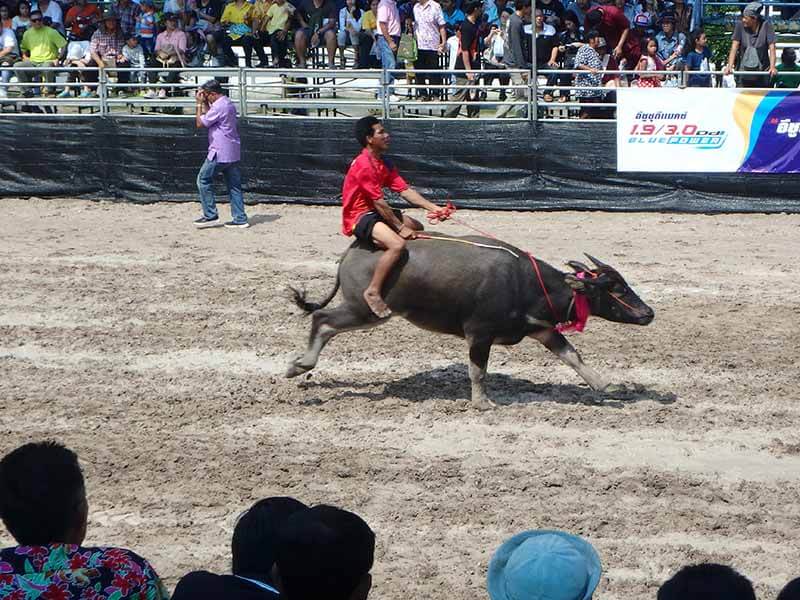
Through the afternoon, Dang jockeys a dozen animals, until he suffers a nasty-looking fall that takes him out of the competition. “I’m OK, just bruised – maybe broken ribs,” he says, still smiling. I admire his resilience. You’ve got to be tough if you’re going to ride bulls in any country. I mention prize money as compensation, to the amusement of the whole team. Prize money, what little there is, will go to buying post-race drinks. “We don’t come here for money – we race for fun, for tradition,” Air says.
The festival is a reminder of the key role buffalo once played in the Thai people's everyday lives, while they are now disappearing from their mud wallows across the country. It’s heartening to see how many animals are at the fair, and that so many still care enough about them to take on the expense of keeping them.
By early evening, the heat and constant noise of the day had worn me to a frazzle. So, I leave the diminishing action behind for a cool, quiet hotel room, still wondering what was going to happen at that elderly woman contest.
Discover similar stories in
discovery
Travel Writer
John McMahon is a painter and writer. His work can be seen on platforms and in publications all across the English-speaking world.
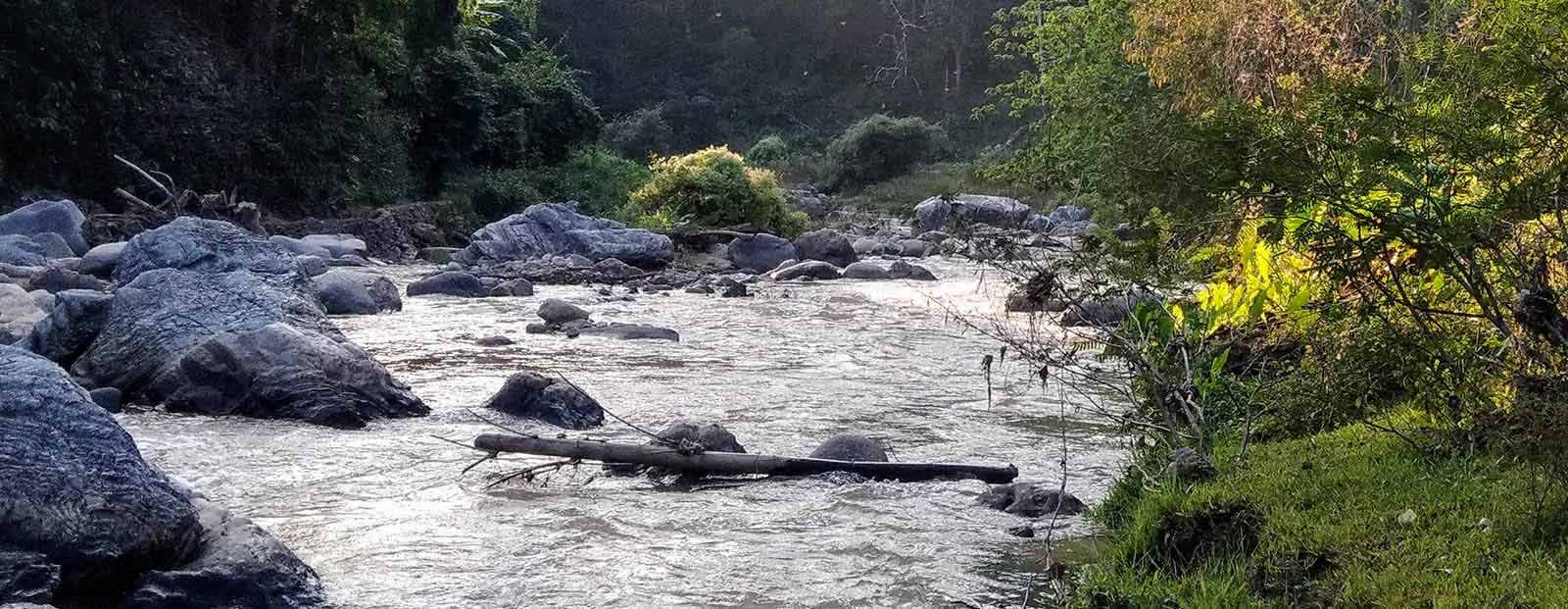
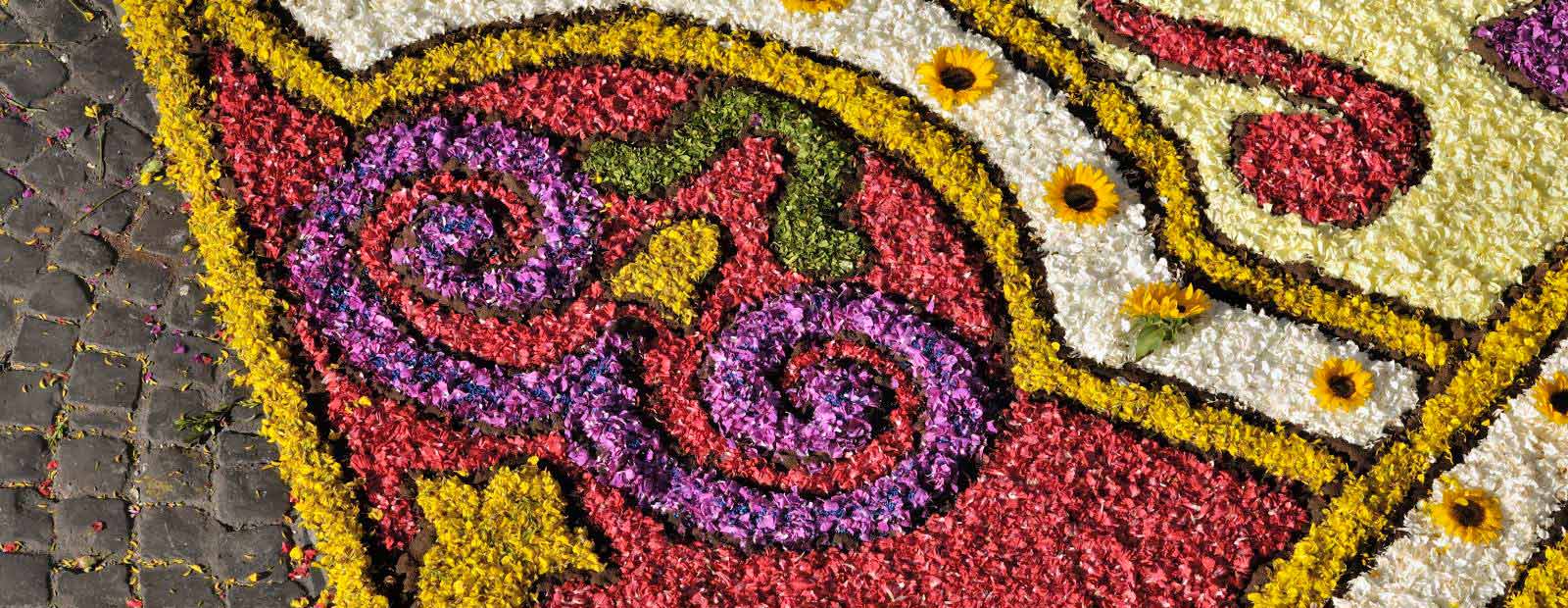
No Comments